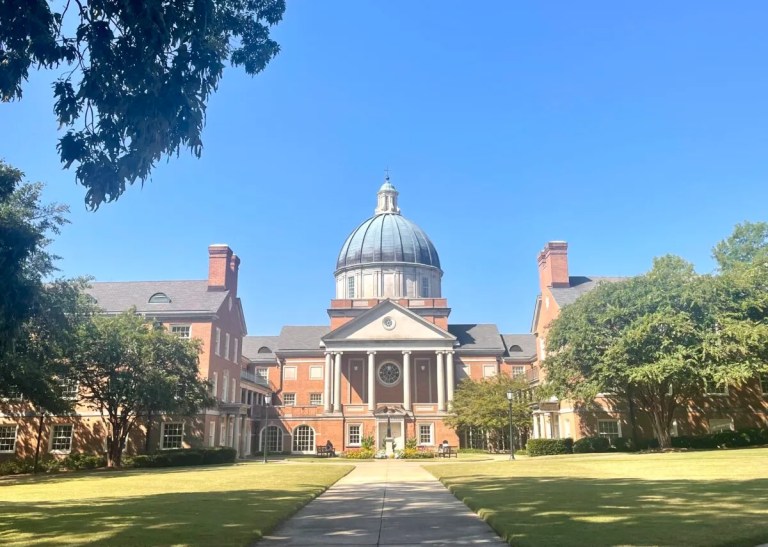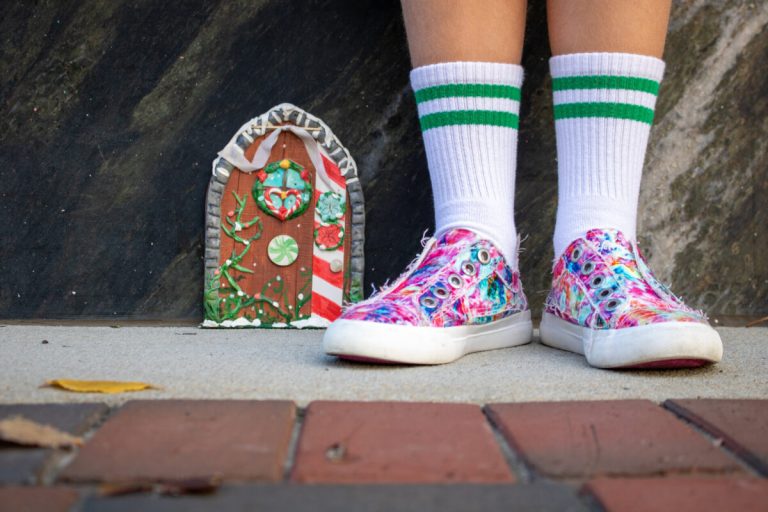Reviewed by: Callie Puryear
UAB has been recognized as one of the best Green Labs academic institutions in the world
Reading time: 5 minutes
Sponsored

Everyone knows what an outstanding research institution UAB is. But most of us don’t think about all the actual *stuff* that goes into groundbreaking discoveries. The UAB Green Labs program promotes sustainable science by reducing the use of energy, water, material goods and hazardous chemicals in UAB labs—without compromising research integrity or safety.
We spoke with Nick Ciancio, UAB’s Sustainability Coordinator, and Emily Colpack, Green Labs Coordinator, to learn more. Keep reading for all the details, including how this program impacts Birmingham as a whole.
1. UAB has been recognized as one of the best Green Labs academic institutions in the world

Green Labs have gone through a certification process that helps them do what they do in lower-waste and energy-consuming way.
“The Green Labs certification program helps illustrate that UAB can continue to have groundbreaking medical research, while simultaneously showing that we care about the planet by reducing electricity consumption, reducing waste generation and prioritizing water efficiency.”
Nick Ciancio, Sustainability Coordinator, UAB
In fact, UAB just won four awards from the International Institute for Sustainable Laboratories (I2SL) and My Green Lab, including the international Freezer Challenge, showing how far ahead of the pack they are in this arena.
The process to obtaining a Green Labs Certification is fairly straightforward. Here’s how anyone at UAB can get started and join the 25% of researchers who are already part of the program:
- Email greenlabs@uab.edu.
- Complete a survey designed by My Green Lab.
- Implement changes recommended by UAB Sustainability within six months to earn the My Green Lab certification.
2. UAB Green Labs by the numbers

Nearly 25% of all researchers at UAB are involved in the Green Labs Program, which has provided over 200 unique presentations to labs across campus, according to Ciancio. The numbers are mind-blowing.
Freezer energy savings:
- Freezer Challenge Winner Tatyana Gavrikova of the Van Der Pol Lab, Department of Medicine, said in the first year of participation in the program, they collected more than one TON of plastic.
- UAB Green Labs has 5 floating freezers across campus for defrosting. The average lab conserves 30,000 kWh/year.
- UAB saved enough electricity from freezer maintenance practices to power 75 homes annually.
Conservation:
- UAB Green Labs has diverted over 75,000 pounds of waste from landfills.
- UAB Green Labs has conserved enough water to fill an Olympic-sized swimming pool over the course of 3 years.
3. Interns make the magic happen

One really cool feature of UAB’s Green Labs program is the high level of student involvement in its success:
“Some people think that our lab recycling interns only help divert waste from landfills, but that couldn’t be further from the truth. Many researchers join the Green Labs Program for the opportunity to recycle this special lab waste—without our interns’ hard work, labs couldn’t recycle. The Green Labs Program is able to accomplish everything it does because of our interns. Without these interns, UAB Green Labs wouldn’t exist and research wouldn’t be nearly as sustainable. We truly couldn’t do it without them. Full stop.”
Nick Cianco, Sustainability Coordinator, UAB
4. UAB’s Green Labs Program provides a roadmap for researchers to translate their values into action

Lyse Norian is Principal Investigator of the Norian Lab in the Department of Nutrition Sciences. For her, participation in the program was a way to translate the values she holds outside the lab into her work. Since she was a charter member of the Green Labs Program, we asked her why it matters. Here’s what she said:
“Improving sustainability practices in research labs is critical—especially right now. UAB is one of the biggest employers in Alabama and there is a huge research presence on campus. So, it makes sense that our research scientists should be leading efforts to move toward sustainable work practices.
Hearing the Green Labs team tell us how much energy just one of our ultra low freezers uses, or how many kilowatt-hours of energy a typical lab consumes in a year, is very eye-opening. It really showed me that we need to make what changes we can, on an individual level, to make our research laboratories more sustainable.
Doing this will help UAB as a whole to decrease our impact on the environment and also provide us with financial savings through reduced energy costs. It’s a win-win situation for everyone involved.”
5. UAB’s Green Labs Program makes a difference across Birmingham

Figuring out creative ways to recycle diverse items ranging from freezer gel packs to pipettes to styrofoam has led to some unexpected impacts throughout Birmingham:
“Our labs get ice packs like the ones that come in HelloFresh boxes. We’ve partnered with Meals on Wheels and Pepper Place Market to make sure they’re getting reused as many times as possible. With all the ways we’re working to reduce waste overall on campus, we’re also finding ways to positively impact the community.”
Emily Colpack, Green Labs Coordinator, UAB
Learn more about UAB Sustainability—visit their website, follow them on Instagram or Facebook today.
Sponsored by:




